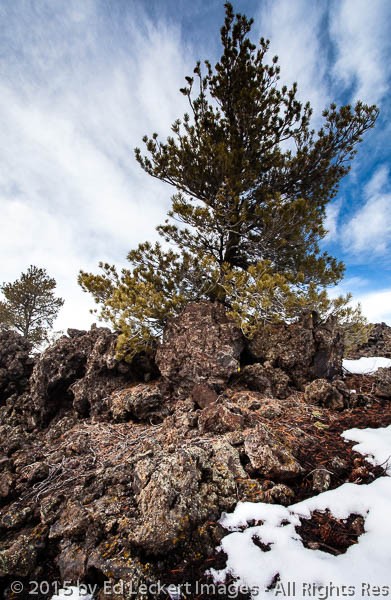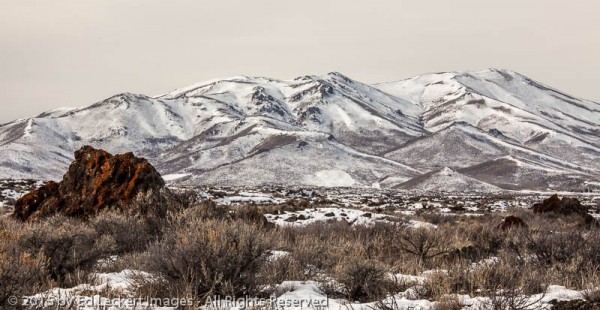


“When astronauts return from their first landing on the moon and report their findings, will they describe the sort of terrain that you see here at Craters of the Moon National Monument? Perhaps not. Nevertheless, the general appearance of this 75-square-mile part of south-central Idaho is suggestive of a telescopic view of the moon.”
These words from the 1961 version of the National Park Service brochure as well as the name of the national monument itself were inspired by geologist Harold T. Stearns in 1923, who described the location in remote Idaho as “the surface of the moon as seen through a telescope”.
When I was a little boy, I was lucky enough to have parents who loved to travel around the U.S. with me, and my first big driving adventure took place in 1962. That was the year of the Seattle World’s Fair, and believe it or not, we drove from New Orleans to Seattle and back to see it. On the way there and back, we visited numerous national parks and monuments such as Yosemite, Yellowstone, Grand Canyon, and Death Valley. Believe it or not, I still remember details of some of those visits, but one I probably slept through was Craters of the Moon National Monument. I don’t remember a thing about it, or even visiting it, but I know we did.
While planning my recent trip to Yellowstone National Park and Grand Teton National Park, I scanned the map for interesting locations to visit on the way home, and without much effort at all I found I could travel a route that included what is now called Craters of the Moon National Monument & Preserve. So I added that to my itinerary. What I didn’t expect to find before I left, while moving a stack of random papers taken from my parents’ house, was an old brochure my mother had saved from that trip back in 1962. How cool is that?
I took the brochure along with me to show to the ranger at the front desk there, but she didn’t seem to be that impressed. “Yeah, people bring those in from time to time. Here’s our new one!”
Millennials! Oh, well.
Anyway, my plan had been to snowshoe around the monument on what was normally a driving loop in the summer but was a groomed snowshoe loop in the winter. Well, with the lack of snow in the Pacific Northwest this winter, it turns out snowshoes weren’t necessary, so I just hiked the loop instead.

A tree grows in an ocean of volcanic rock created several thousand years ago, in Craters of the Moon National Monument, Idaho.
The monument was created in 1924 by President Calvin Coolidge, who used the Antiquities Act of 1906 to preserve “a weird and scenic landscape, peculiar to itself”. This was likely a direct result of an article in National Geographic written by taxidermist, explorer, and author Robert Limbert, a flamboyant promoter of all things Idaho.
So what exactly is this place about and how did it get here? It’s a vast ocean of lava flows with scattered islands of cinder cones and spatter cones, created along the Great Rift volcanic rift zone and now covered with sagebrush. It was created between 15,000 and only 2,000 years ago when vast volumes of lava issued from a series of deep fissures – the Great Rift – to produce this vast ocean of rock. And, to make things interesting, geologists believe that future events like this are likely!
It turns out that this area has a closer connection to the moon than just the name. As part of their training for the Apollo missions to the moon, Alan Shepard, Edgar Mitchell, Eugene Cernan, and Joe Engle learned basic volcanic geology here in 1969.
Back on earth, my hike around the loop on this partly sunny, mostly dreary day was fairly uneventful, right up until the farthest point from the entrance when I was climbing through a pass between several cones, near where these images were taken. That’s when all hell broke loose. The winds in that pass picked up to the point that I could hardly move up the hill, and almost got blown over a few times. But, I made it back without getting blown off the trail, and no one had to come out looking for me. That’s always a good thing!

Seemingly from another world, the desert and mountains sport a light dusting of snow, at Craters of the Moon National Monument, Idaho.
So, next time you find yourself in Idaho out on US Hwy 20/26/93 between Boise and Idaho Falls, save a few hours for a visit to Craters of the Moon. Maybe there’ll be some fresh, hot lava to explore by then!
